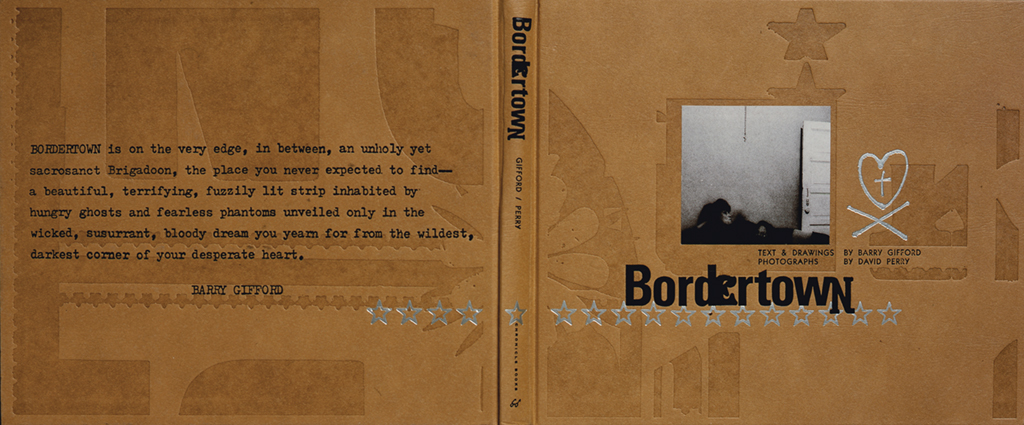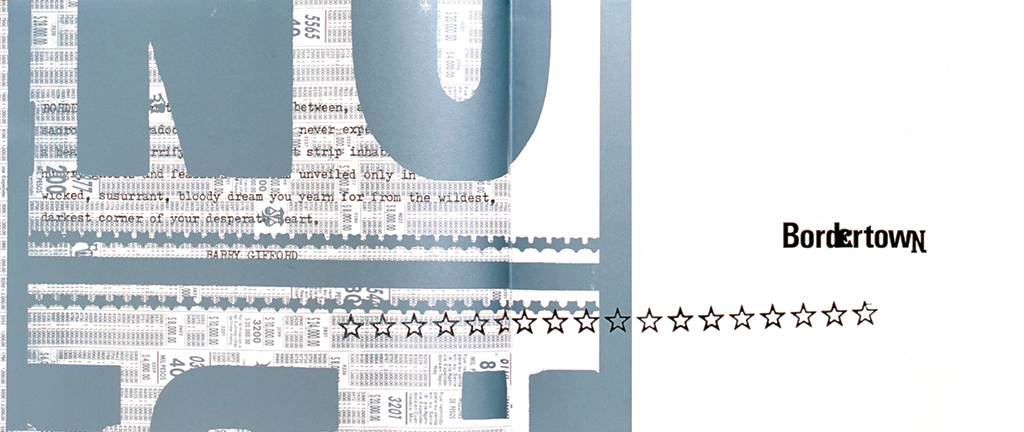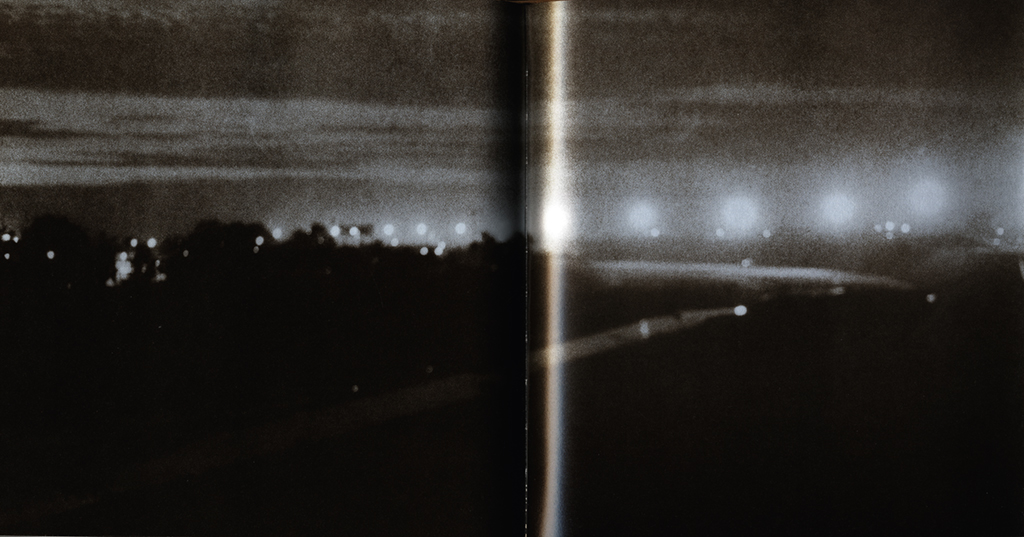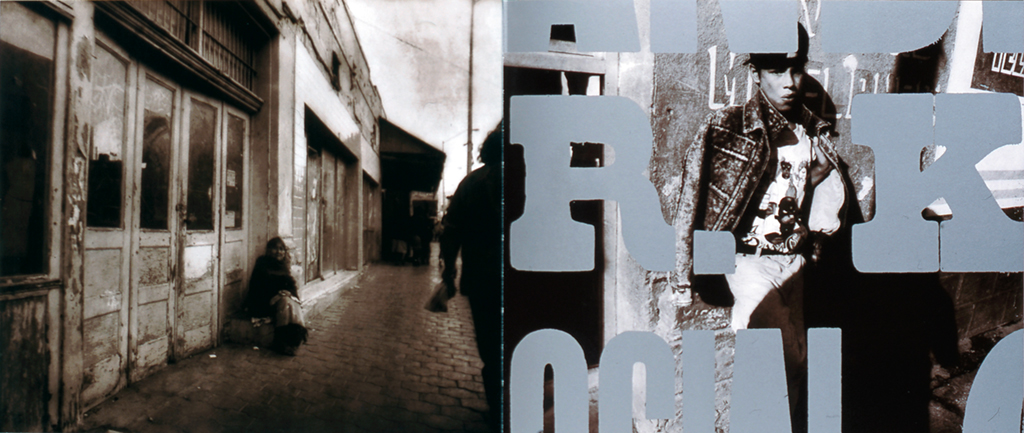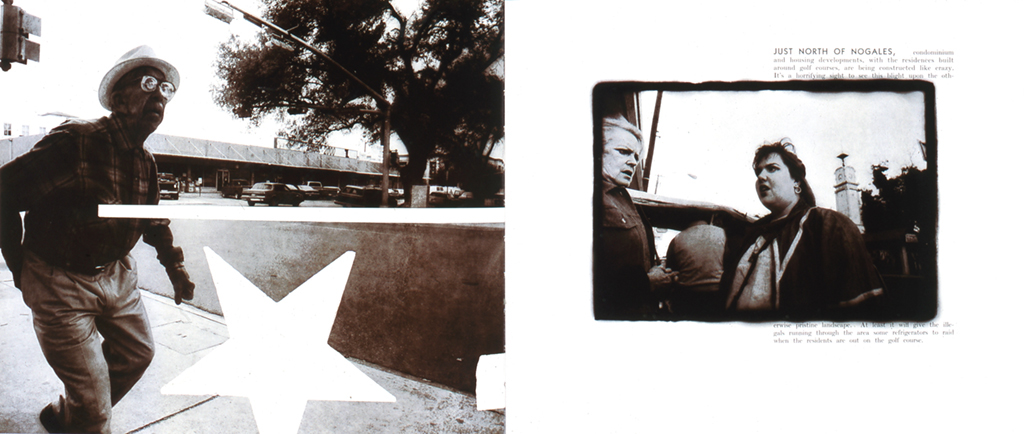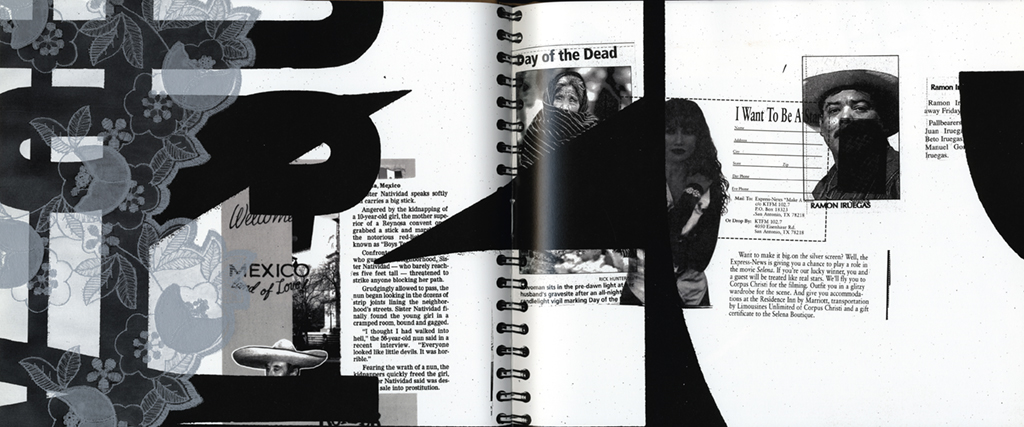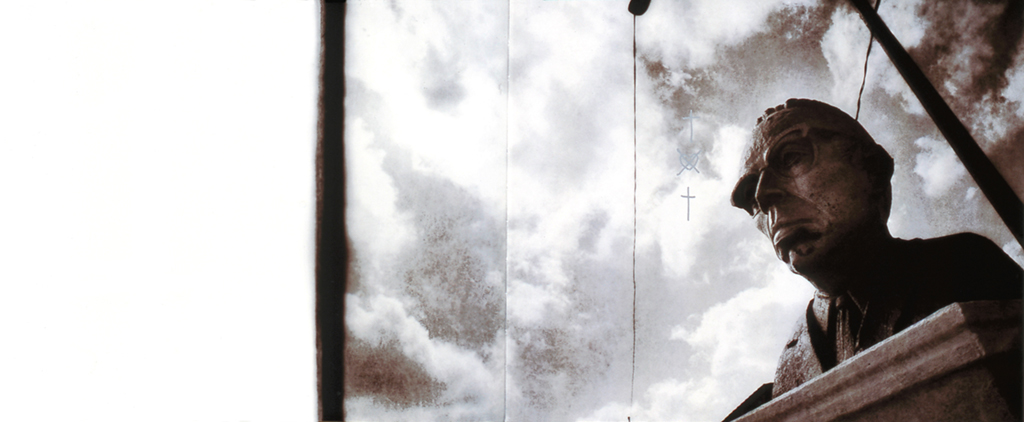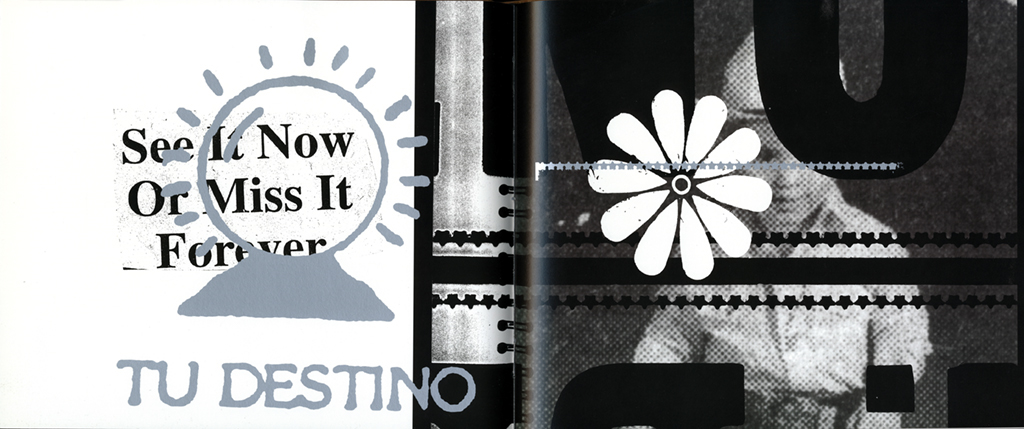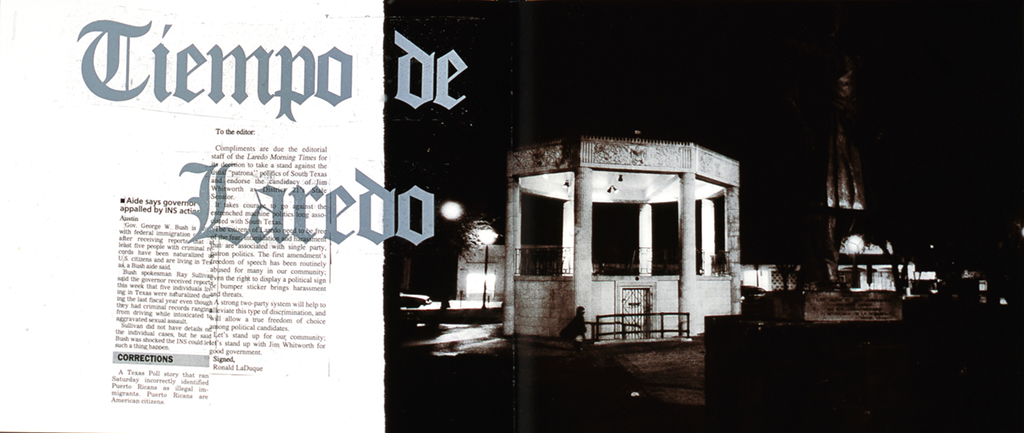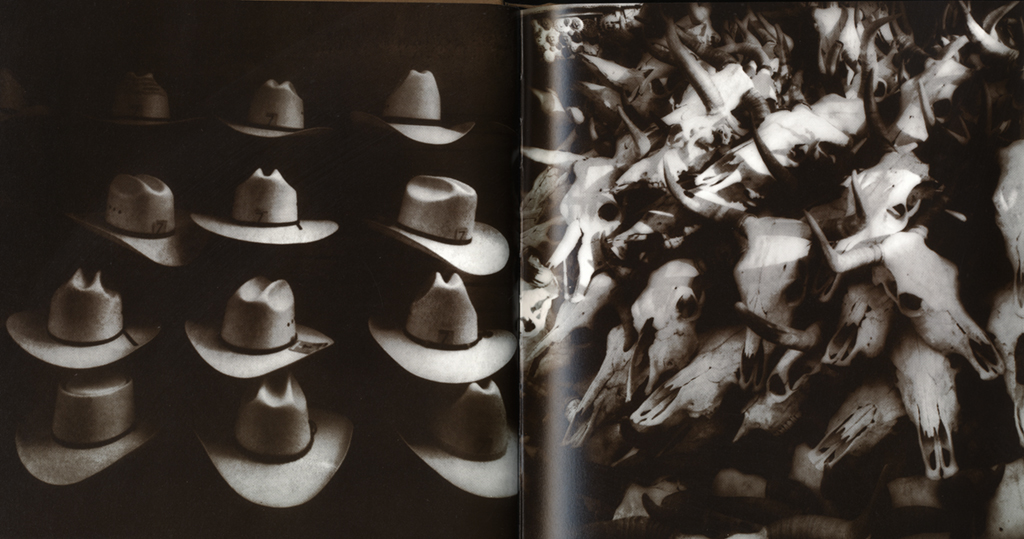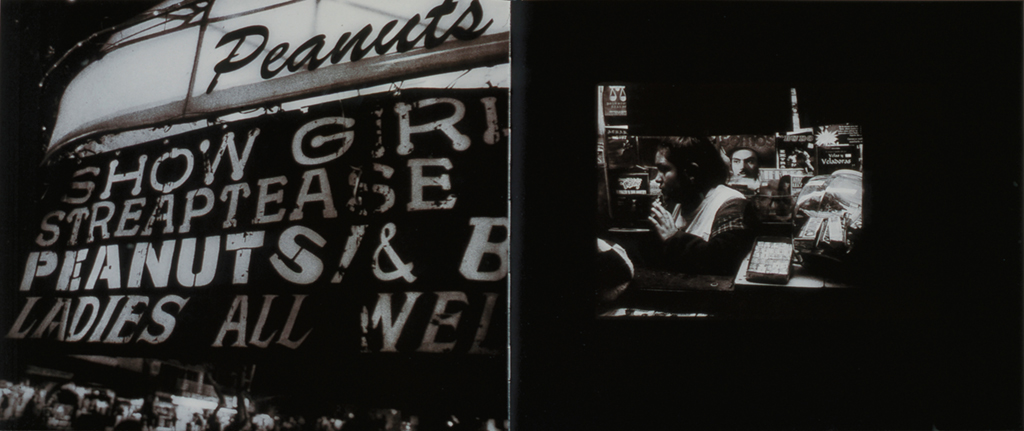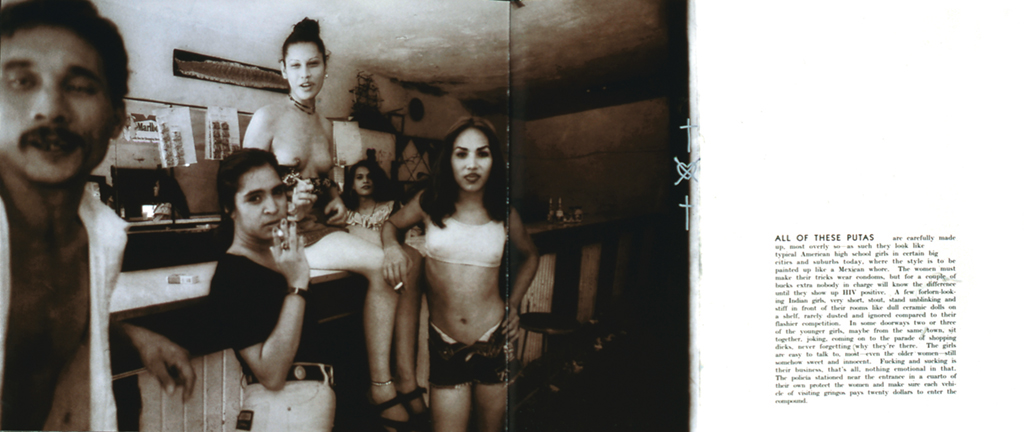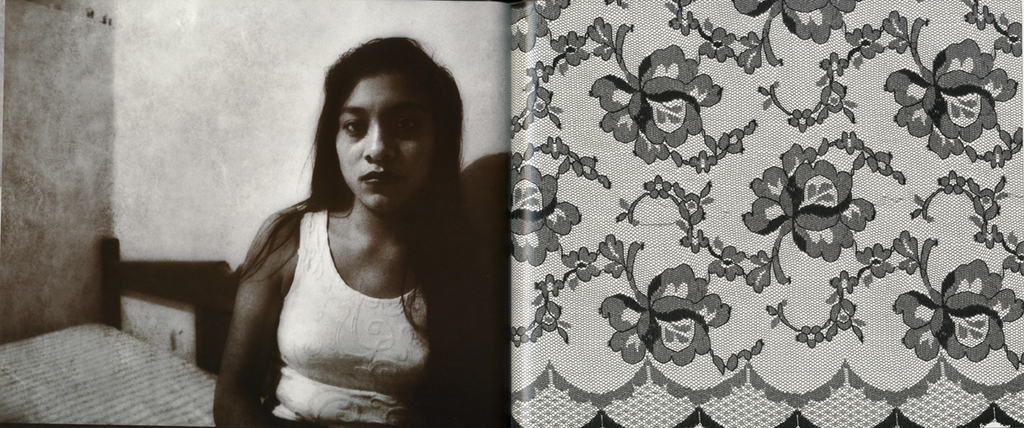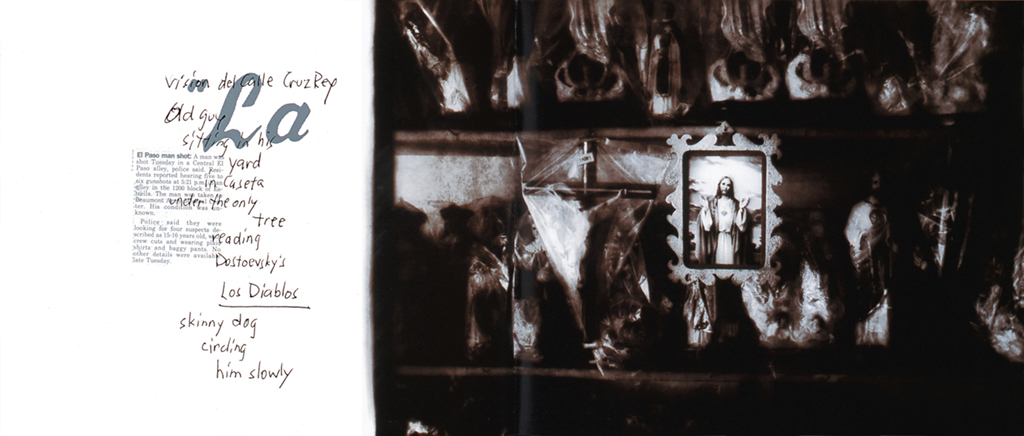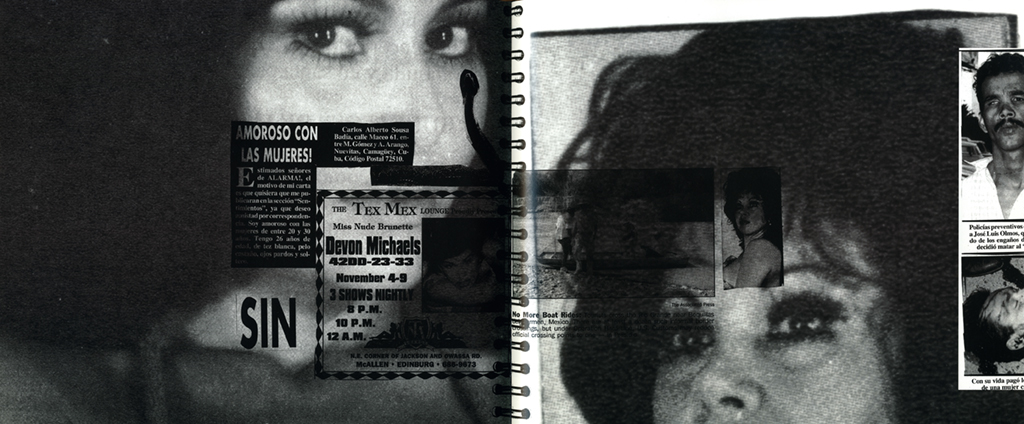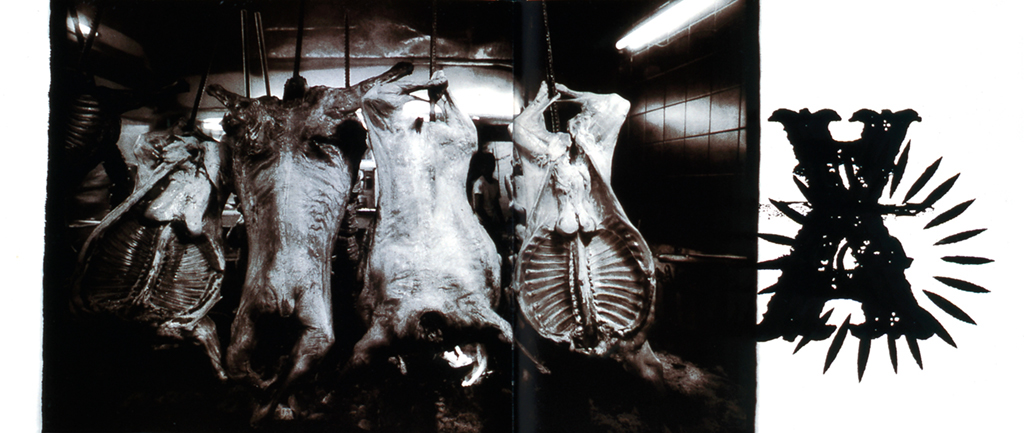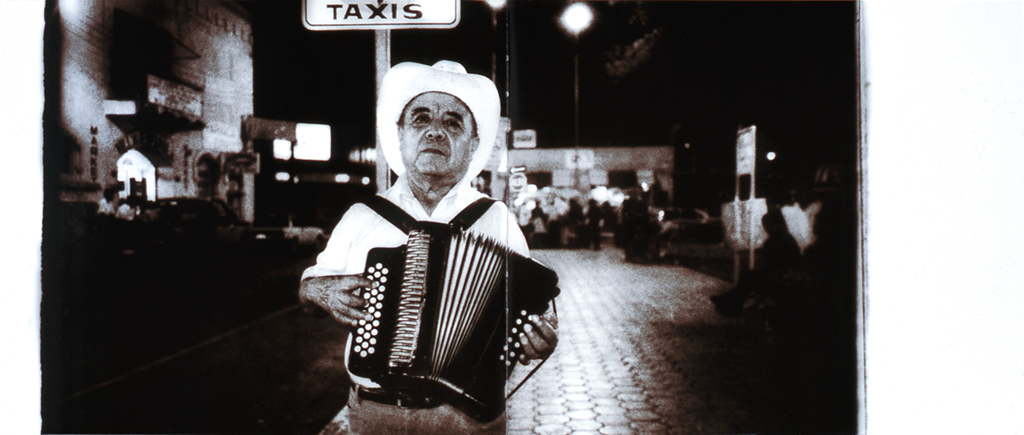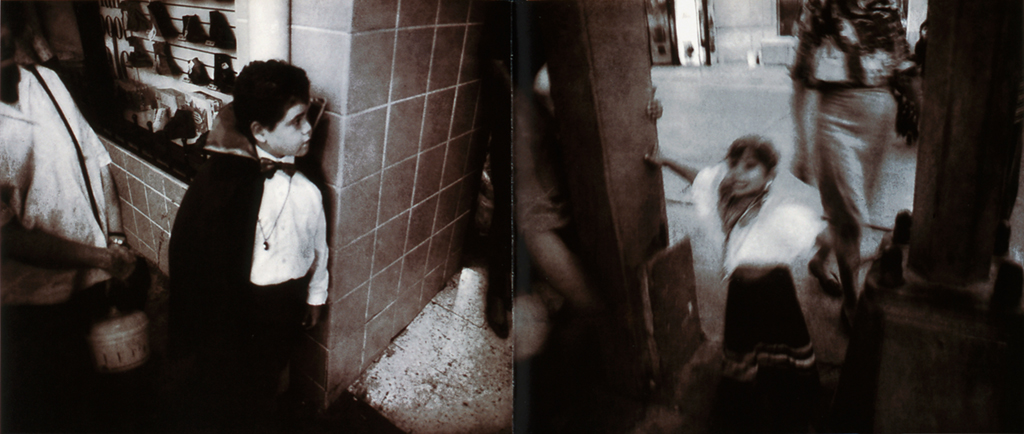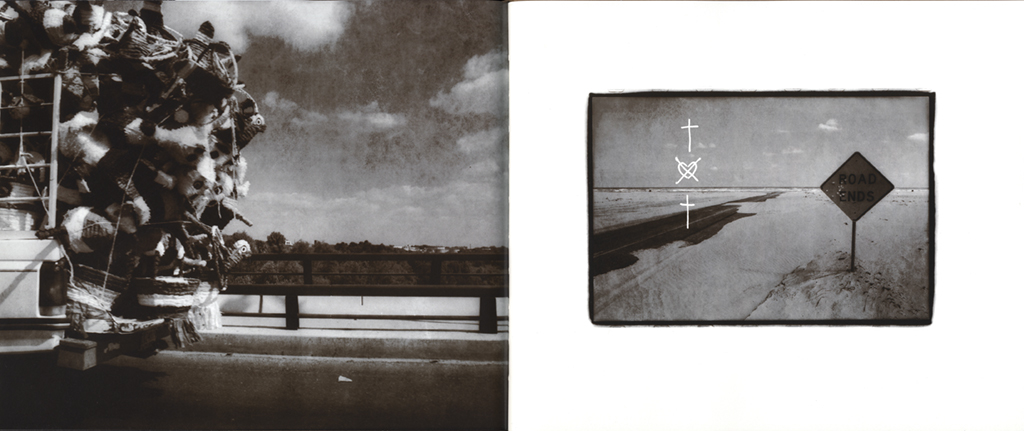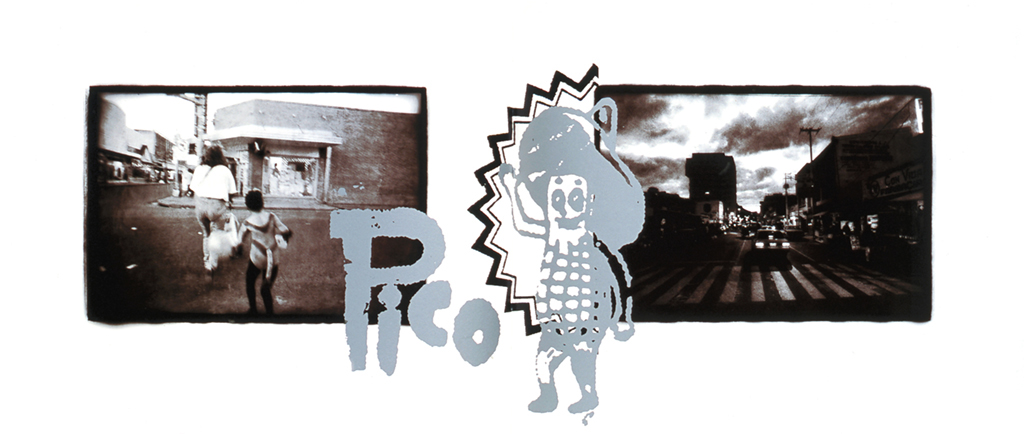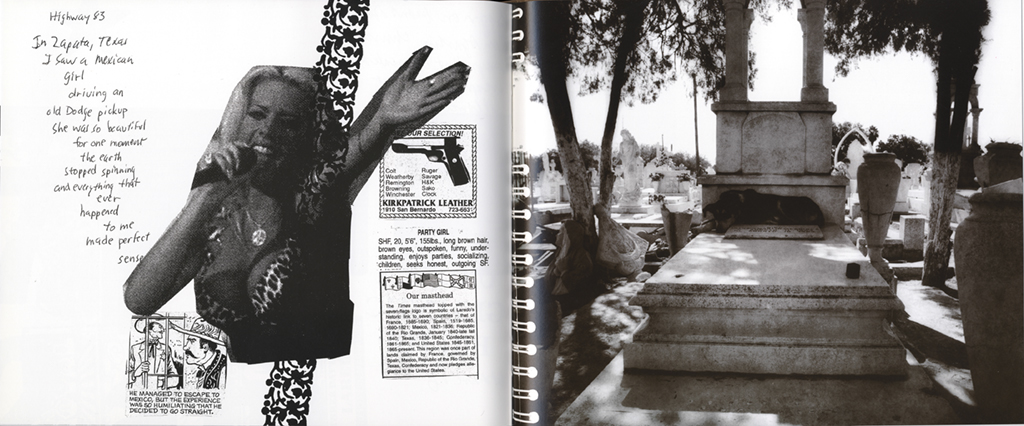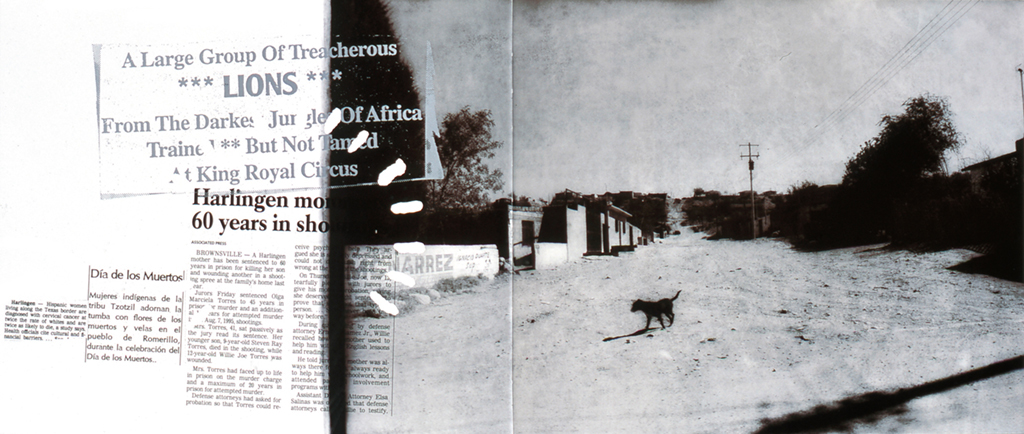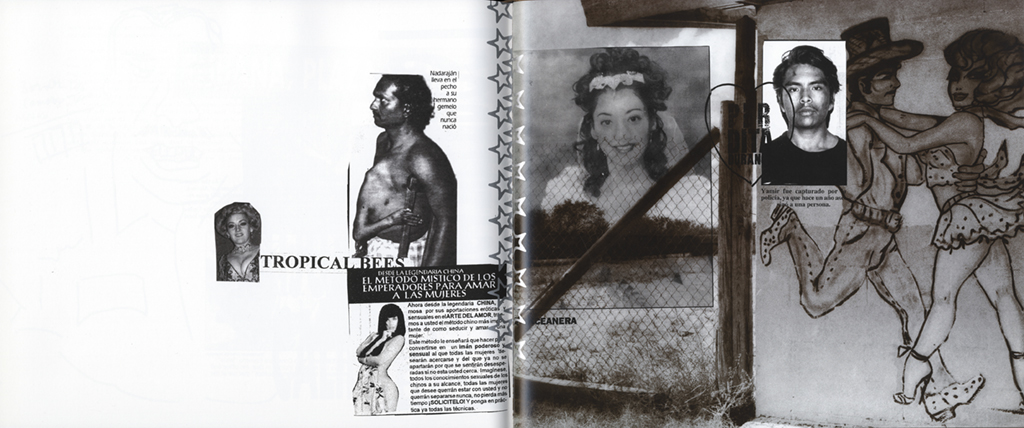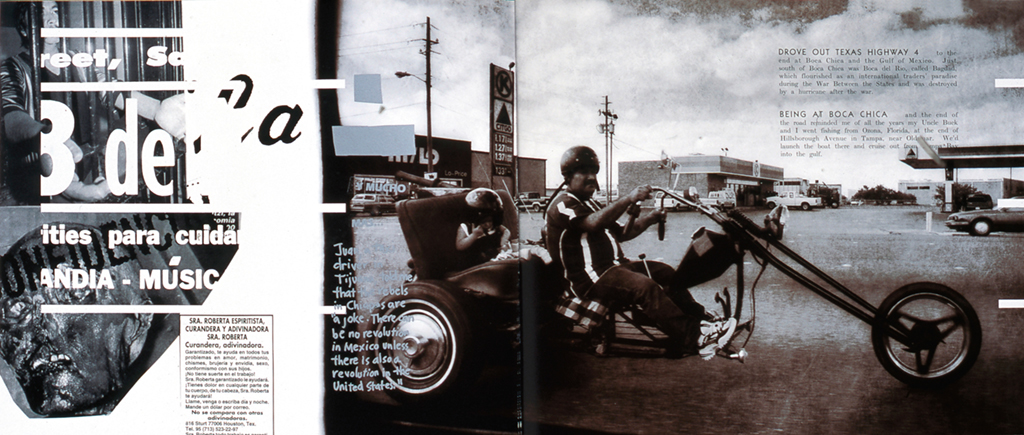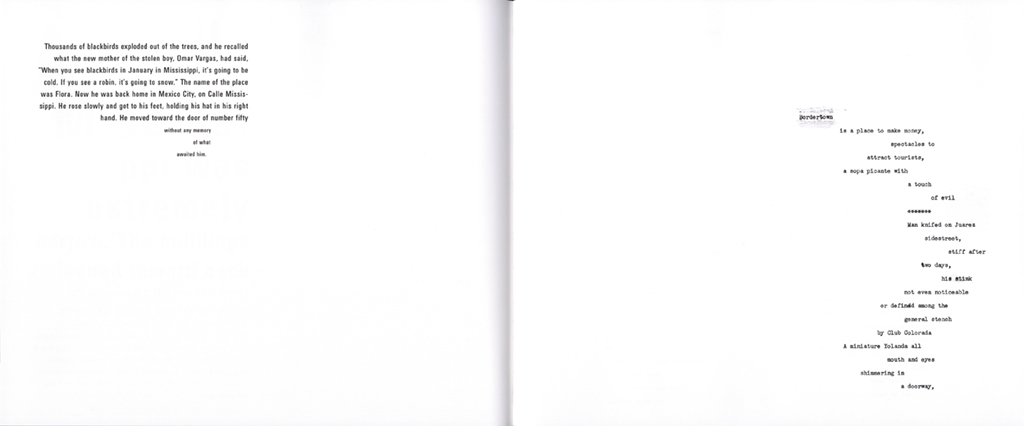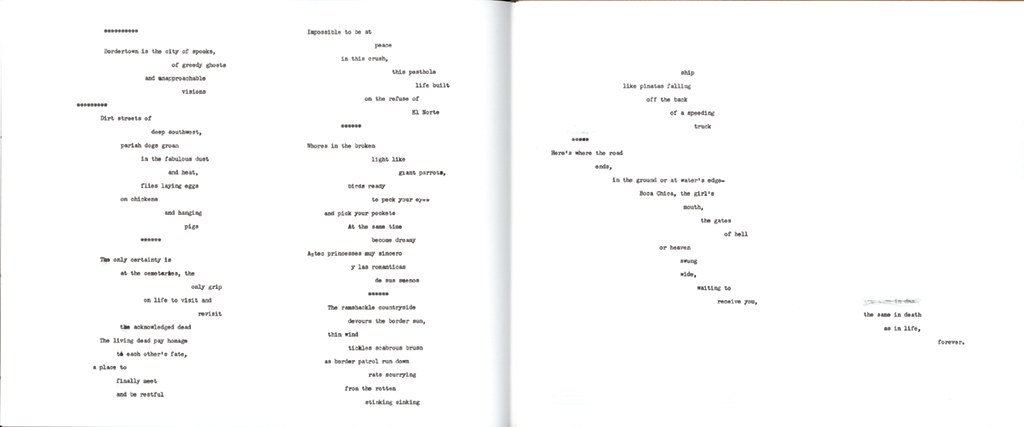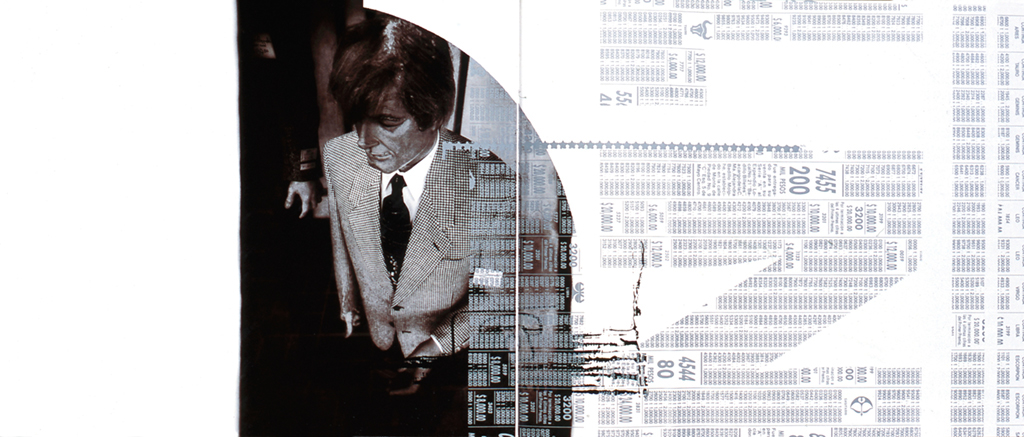CHRONICLE BOOKS: Bordertown
Bordertown Text and Drawings by Barry Gifford Photographs by David Perry Designed with Geoff Kaplan Chronicle Books, San Francisco 1997
Bordertown
Text and Drawings by Barry Gifford
Photographs by David Perry
Designed with Geoff Kaplan
Chronicle Books, San Francisco
1998
Text and Drawings by Barry Gifford
Photographs by David Perry
Designed with Geoff Kaplan
Chronicle Books, San Francisco
1998
“Bordertown” chronicles a road trip along the U.S./Mexico border from the Pacific to the southern tip of Texas. Writer Barry Gifford and photographer David Perry returned with a box of raw material — Barry’s notebook of compiled artifacts, clippings, journal entries, and stories, and David’s carefully printed photographs.
This is not a history, though history is inextricably tied to those pictured. This is not a travel book, although it was conceived by travel and geography shapes its discourse. But more than any other, “Bordertown” exemplifies my ideal design project. The designer is elevated to collaborator, assuming tremendous responsibility in the process. The result is a document that is fully alive with the heartbeat of its subject and the collective breath of its creators.
The design of the book reflects the design of these towns. It is abrupt and aggressive. One element butts up to its neighbor and challenges its territory. Old buildings are not torn down, but left to stand, papered over, renamed and repurposed.
The book is filled with impressions. All of its contributors were foreigners, and our outsider status is evident. “Bordertown” is formed from wide-eyed observation and misunderstanding, valid but unusual strategies for creative engagement.
The role of designer pushed past the traditional scope of the job. We were given authority to pick from Barry's and David's artifacts and pictures, to order them as we saw fit, and most amazingly, we were allowed to insert elements collected in our own parallel travels. For that we are grateful to Caroline Herter, the book's editor, whose vision for the project included this freedom and trust.
The book was not a big seller, and I am sorry for that. But there are other measures of success for a project like this. Maybe the greatest one is to have used the opportunity we were given to create a living, breathing document that captures some essential qualities of its difficult subject — a testament to the role designers can play in collaboration with, not just in service to, our clients and fellow artists.
This is not a history, though history is inextricably tied to those pictured. This is not a travel book, although it was conceived by travel and geography shapes its discourse. But more than any other, “Bordertown” exemplifies my ideal design project. The designer is elevated to collaborator, assuming tremendous responsibility in the process. The result is a document that is fully alive with the heartbeat of its subject and the collective breath of its creators.
The design of the book reflects the design of these towns. It is abrupt and aggressive. One element butts up to its neighbor and challenges its territory. Old buildings are not torn down, but left to stand, papered over, renamed and repurposed.
The book is filled with impressions. All of its contributors were foreigners, and our outsider status is evident. “Bordertown” is formed from wide-eyed observation and misunderstanding, valid but unusual strategies for creative engagement.
The role of designer pushed past the traditional scope of the job. We were given authority to pick from Barry's and David's artifacts and pictures, to order them as we saw fit, and most amazingly, we were allowed to insert elements collected in our own parallel travels. For that we are grateful to Caroline Herter, the book's editor, whose vision for the project included this freedom and trust.
The book was not a big seller, and I am sorry for that. But there are other measures of success for a project like this. Maybe the greatest one is to have used the opportunity we were given to create a living, breathing document that captures some essential qualities of its difficult subject — a testament to the role designers can play in collaboration with, not just in service to, our clients and fellow artists.
